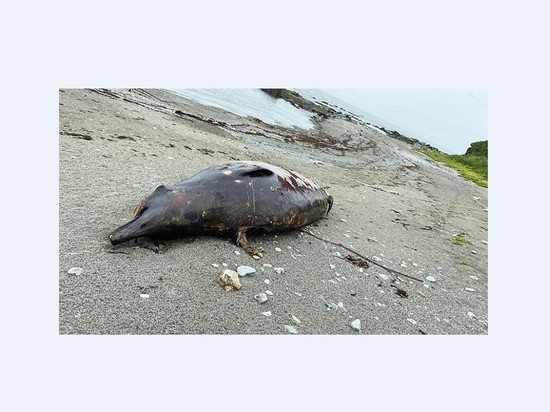After the storm, the carcass of an unidentified creature was thrown onto the Sakhalin beach. The vacationers who made the find shared the pictures in social networks. Posted photo and Instagram account Incident65.
The creature looks like a dolphin several meters long with a beak. According to the publication “Sakhalin and Kuriles”, zoologists from the branch of the All-Russian Research Institute of Fisheries and Oceanography (VNIRO) have already become interested in the pictures. They intend to identify the animal.
Preliminarily, biologists believe that this is a floater or beak, which is very rarely washed ashore. By themselves, these are two species of rather poorly studied and mysterious marine mammals.
So, the beak is a marine mammal from the Beak family, the only representative of the genus Ziphius. Due to the difficulties in recognizing this species (from a distance it is difficult to distinguish from others) and the wide range, the number of animals in the population remains unknown. Presumably, it lives throughout the world’s oceans, except for Arctic and Antarctic waters. It grows up to 7 meters and can weigh 2-3 tons. American zoologists have established that the beak is the record for the depth and duration of diving among marine mammals. There is a known case when the beak-beak reached a depth of 2,992 m and lasted 137.5 minutes under water. Due to the fact that the animal keeps great depths, it is rarely seen by the inhabitants, their carcasses are rarely thrown ashore.
The swimmer is a representative of toothed whales of the same Klyuvorylov family. There are two types: northern and southern. They are practically indistinguishable, the only difference is their range. The length of the southern floaters is up to 12 m, of the northern ones – 12-13 m. The weight reaches 14 tons. Thus, floaters are the largest members of the beaked whale family. A distinctive feature is a long beak. The life of waterfloors is little studied. Usually they move in groups of 3 to 10, and in rare cases – up to 50 individuals.
